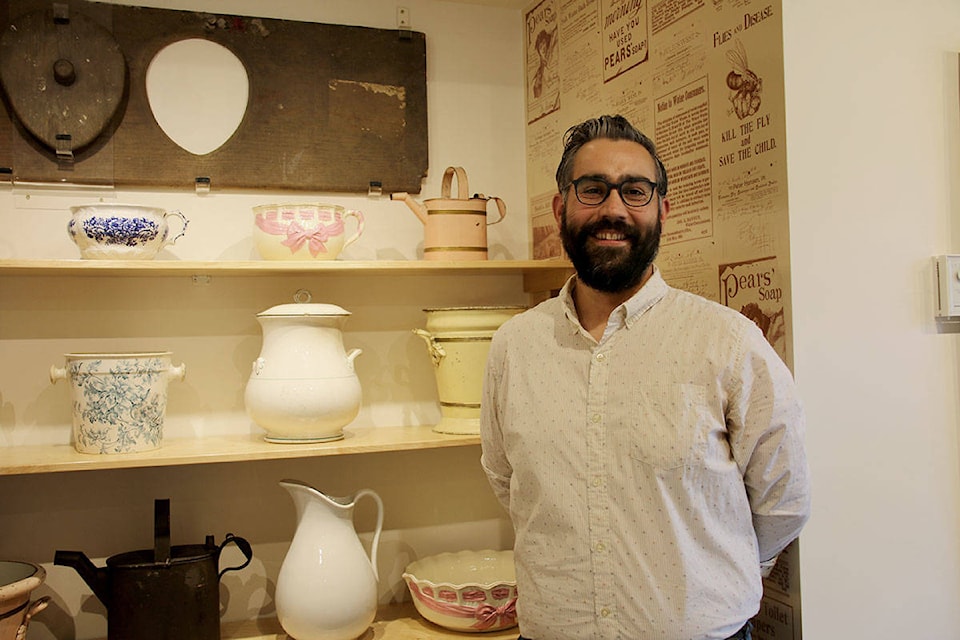A new exhibit at the Point Ellice House Museum is showcasing the history of waste and water in Victoria.
Kelly Black, executive director, says one of the most common questions he gets when visitors stop by the museum is about the bathrooms and kitchens from the past.
“Probably because going to the bathroom and needing to eat is universal, so people are interested in the history of that.”
The exhibit tells the story of the rapid expansion of the city’s water works, from a few simple wells on the edge of town to the damming of Elk and Beaver Lakes and its wooden piping of swampy-smelling water to Victoria’s most fashionable homes.
READ ALSO: Point Ellice House exhibit offers new lens into colonial history
“The water supplied by the city water works was of a disgusting character, foul-smelling and full of living organisms, and totally unfit for human use,” reads a newspaper clipping citing Joan Dunsmuir in the exhibit.
| A section of wooden piping used in Victoria in the 1860s. (Kendra Crighton/News Staff) |
Around 1876, Peter O’Reilly, splitting the cost with a neighbour, paid $424 – which is the equivalent of more than $10,000 today – to run pipes from the city’s mains to the house. Using the O’Reilly family home and privileged lifestyle, the exhibit is able to tell broader stories about the city.
One of the most interesting aspects of the exhibit is the focus on night soil scavengers – tradesmen who made a living off manually removing sewage from the city’s homes during the 19th century.
READ ALSO: Royal BC Museum asks for pandemic stories, photos for COVID-19 exhibit
“We tried to show that people, like the O’Reilly family, well, they had the best that sanitation could offer,” says Black. “But the people who worked here, First Nations people or Chinese people who were employed by the families that lived here, often didn’t have the same luxuries.”
Night soil scavengers – which Black calls early businessmen – would collect human waste in a horse-drawn cart and dump it at the edge of town or near the water.
“They would charge their own rates, but it certainly wasn’t a converted position,” he says.
Some may be surprised to learn, Cook Street Village now stands where a once well-used dumping site was. According to the exhibit, it was probably more by good luck than good management that there were no substantial typhoid or cholera outbreaks in Victoria.
Admission into the museum is by appointment only. The exhibit is open from noon to 4 p.m. on Saturdays and costs $8 for two people. While the historic house remains closed due to COVID-19, an outdoor exhibit has been set up and Black encourages people to bring a picnic and enjoy the water-front grounds, which he calls a “hidden gem.”
For more information visit pointellicehouse.com.
Do you have something to add to this story, or something else we should report on? Email:kendra.crighton@blackpress.ca. Follow us on Instagram. Like us on Facebook and follow us on Twitter.
